>
Our Meat Supply
That is the title of the last section of recipes, regarding meats, in Austin’s Domestic Science Books 1 & 2, my grandmother’s 1914 home economics book. I thought that, as the last installment in this line of posts, it would be fun to share some of this information from the past and give you a little bit of history.
As usual, a recipe from the book will follow. Last night, Mr. Fix-It and I tried a recipe from the section on meats and it sounded hearty enough. It was good…sort of. The flavor was wonderful but neither one of us was real impressed with the dough. I would have used a short dough like a pie dough. This recipe called for a biscuit dough. But as I chowed down on this “meat pie”, I could see it being served in an early 1900’s boarding house or in a sod hut in the Oklahoma Indian Territory. Cooking was a pretty simple affair back then and so flavors were simple and recipes were as well. You might like it with the biscuit dough. Or you can use a pie dough. So try it and see what you think!
But first, here is an exerpt from this turn-of-the-20th century book on domestication:
By “meat supply” we are apt to mean beef supply, since we are a nation of beef-eaters, with bacon and ham and mutton holding second place in our meat diet. We may congratulate ourselves on our liking for beef, since it is meat that gives to the system the greatest vigor and energy, both of brain and body. It is a curious fact that the cheaper cuts of beef contain the most nourishment, and another curious fact that people of moderate means, even poor people, use the more expensive cuts. Why? Because the average American housewife does not know how to cook the cheaper cuts in such a way as to make them palatable, whereas people of wealth employ foreign cooks in their kitchens and these cooks, or chefs, know the superior value of the cheaper cuts and how to prepare them in their most palatable form. Ribs and loins are expensive, and yet it is for these cuts the average housewife asks when hurrying home from an afternoon’s shopping to prepare dinner for the family.
Boiled beef is the most healthful of all and it is best when prepared from the cheaper cuts because these cuts are full of tough, juicy muscles. By boiling they are made tender and digestible, burdening the stomach but a fraction of the time required to digest beefsteak, pork, or even chicken. The United States government prescribes as an ideal ration the simple one of boiled beef, bread and molasses.
Sources of Beef Supply
Although the rising prices of all meats would seem to indicate a scarcity of the supply, the United States actually produces more than enough meat for its own use. The surplus is sent to England and other foreign countries. We export more than $50,000,000 worth each year and , in addition, many shiploads of live cattle…[The US exported $3,439,000,000 of beef in 2010]
Western Cattle Ranches
Nowadays large rances are appearing wherever the water supply is sufficient to warrant them, and instead of “range” cattle, the majority of the cattle shipped to the great markets are ranch cattle. Close to the mountains and in the stream-fed canyons you may still meet “bunches” of surprised-looking cattle, each group led by a masterful great bull, just as the herds of buffalo were led fifty years ago in the same canyons and on the same plains. [mountains and canyons in Oklahoma???] Cattle ranching is often immensely profitable and a large ranch is likely to be equipped with every city comfort and convenience, from a telephone which forms part of the miles of wire fence, to a school and a store.
Both on the ranches and the ranges, branding is still practiced, though many believe it should be abolished and some more humane system of designating cattle be substituted for it. What is known as the “running iron” is illegal in most states, but it is none the less widely used although it is regarded as less humane than the shaped brand, which requires but an instant of application to leave a permanent mark. [Note: Branding is still done her in Oklahoma and in Texas]
And so, let’s make use of some of this beef!!
Meat Pie
2 cups flour
4 tsp baking powder
1/2 tsp salt
2 – 3 tbsp shortening
3/4 cup milk
a quantity of cold roast beef or beefsteak (I used a quart of home canned rump roast)
1/2 onion
1 cup sliced potatoes
water to cover potatoes
beef stock
2 tsp corn starch
salt and pepper to taste
If using fresh beef, cut into cubes and cover with beef stock to boil until tender. Slice potatoes and cover with water in a second pot. Parboil for 8 minutes. Drain potatoes
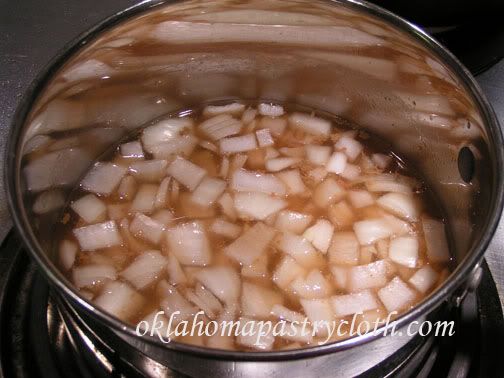
When beef is cooked, strain from stock and add onions to boil.

While onions are boiling, put flour, salt and baking powder into a bowl.
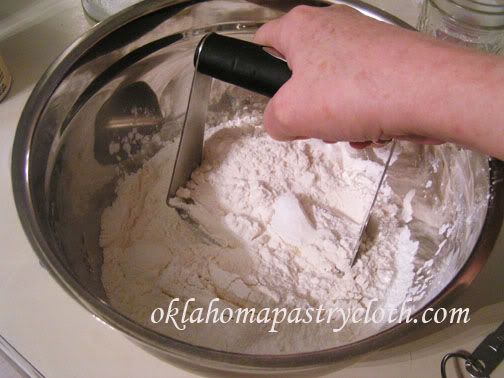
Cut in shortening until it looks like small granules

I used my canned rump roast for the beef. Beef should be tender and shredable.
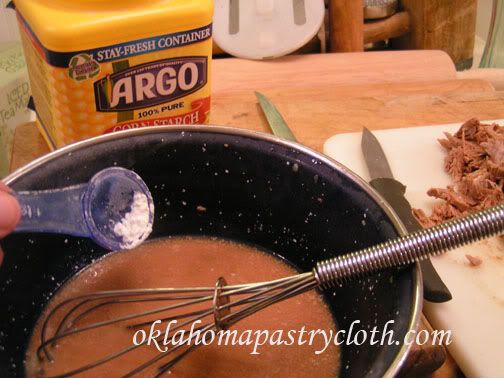
Take out a little beef stock to cool. Add some water to cool faster. Add cornstarch and blend. You can also add a tbsp of brown gravy mix if you would like for a richer flavor.

While stirring the simmering broth, add corn starch and broth mixture and stir to thicken slightly.
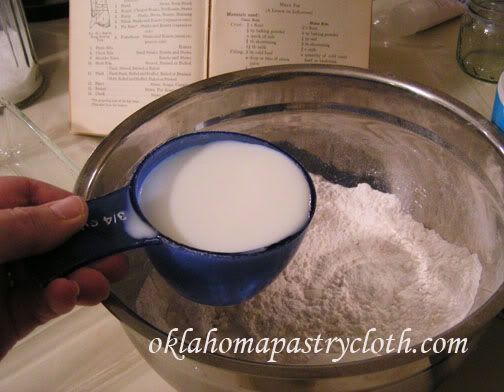
Add milk to the flour mixture and stir to form a dough ball. Add more milk if the dough is too dry.
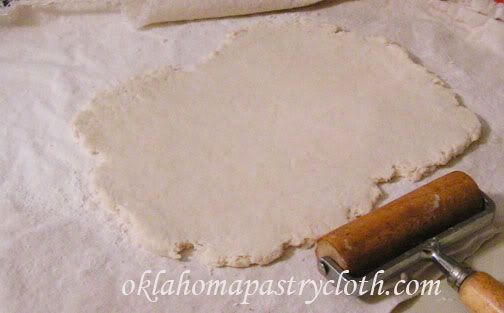
Roll the dough out into a rectangle and cut for sides leaving enough to use as a top crust.
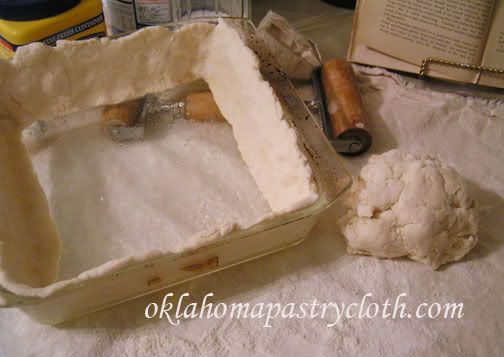
Place dough around the edges of a greased baking dish. Do not put any on the bottom
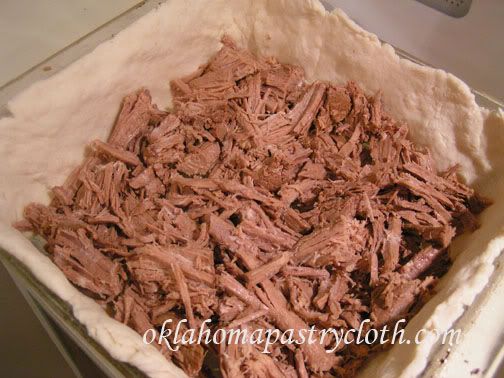
Fill the baking dish with meat
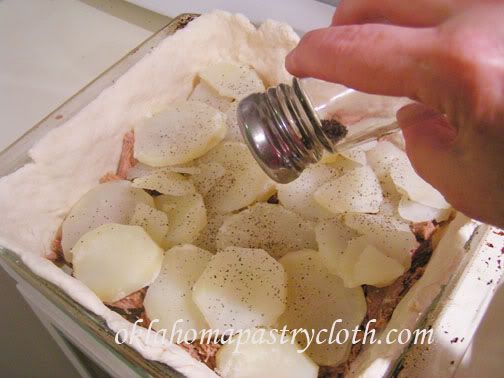
Add potatoes and salt and pepper
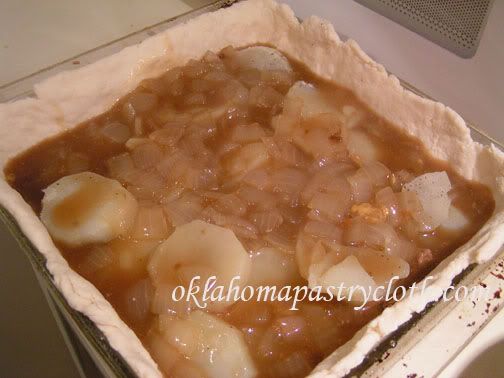
Pour the thickened broth with onions over the meat and potatoes
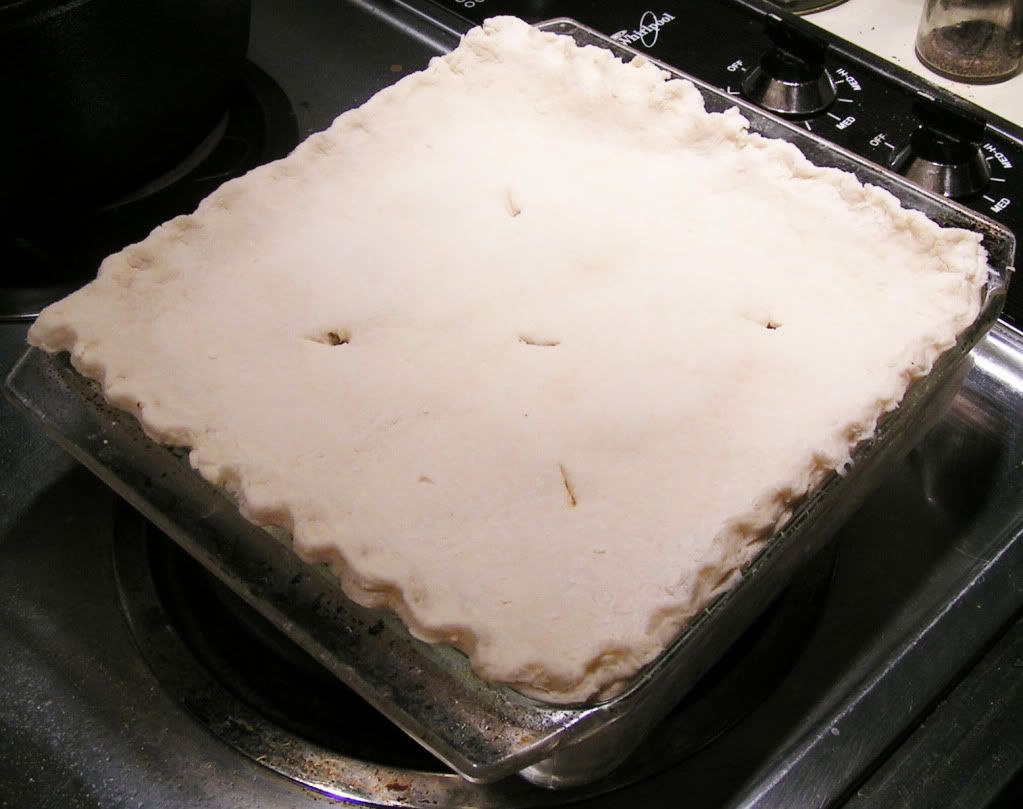
Place dough on top and crimp for appearance if you like. Make a few slits through the top of the crust. Bake at 425º for 30 – 35 minutes or until browned

The crust browns nicely for an appetizing pie
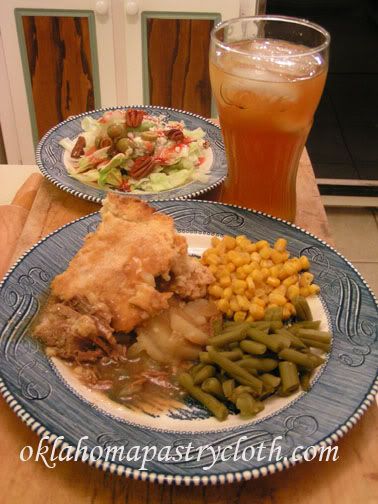
Serve with salad and veggies and you’re right back into the early 1900’s!!
Happy Vintage Cooking!

MB
|



















I am such a beef person, i really don’t care about much else… I like shrimp and who doesn’t love bacon? But when it comes to cooking a meal it has to be beef! Yum!!
I like the statement about herds of buffalo fifty years ago! Yikes!
We still brand cattle here in Arizona too.
What a beautiful presentation with the nicely browned top! I guess it’s kinda like beef pot pie!
Carol, you’re a good Okie! Beef is what’s for dinner!!! (Beef Council)
Beef is what’s for dinner!!! (Beef Council)
Yes, it is like beef pot pie but without any veggies. As I said, I think that I will use a pie crust next time, but that’s just me. A lot of people like a biscuit crust on their dishes. And I caught that comment about the buffaloes too. Pretty amazing, huh?
Just really enjoying the saga. When you read those passages, I just sit here and think of how it must have been in those days.
Then I thought, oh, where’s all the spices, flavors, (garlic, bay leaf, etc). So those days cooking appears to be kind of bland, but hardy.
Thanks for sharing.
Diane
I know, Diane!! In looking through all of the recipes and articles, I found no garlic or cumin or tumeric or anything like that. Cinnamon and nutmeg were a regular in desserts, but the main dishes were really bland. But I had to remember that stuff from overseas was expensive!! And especially in the midwest, hard to come by.
Love this series! More, if you have it!!
Brenda, so glad you are enjoying it! I will be doing more in the future, but have had a couple of canning requests and will be taking a u-turn in that direction. I have a bunch of books that I got from my mom and will be doing stuff out of each.
I was thinking the same thing as Daniel, but then again maybe the food was more about simple flavors and I have to wonder if fresh food isn’t more flavorable than most of the foods we but now in the store, things are picked early and bred for commercial reasons like appearance and not flavor, ripened artificially, etc…
good point, Carol